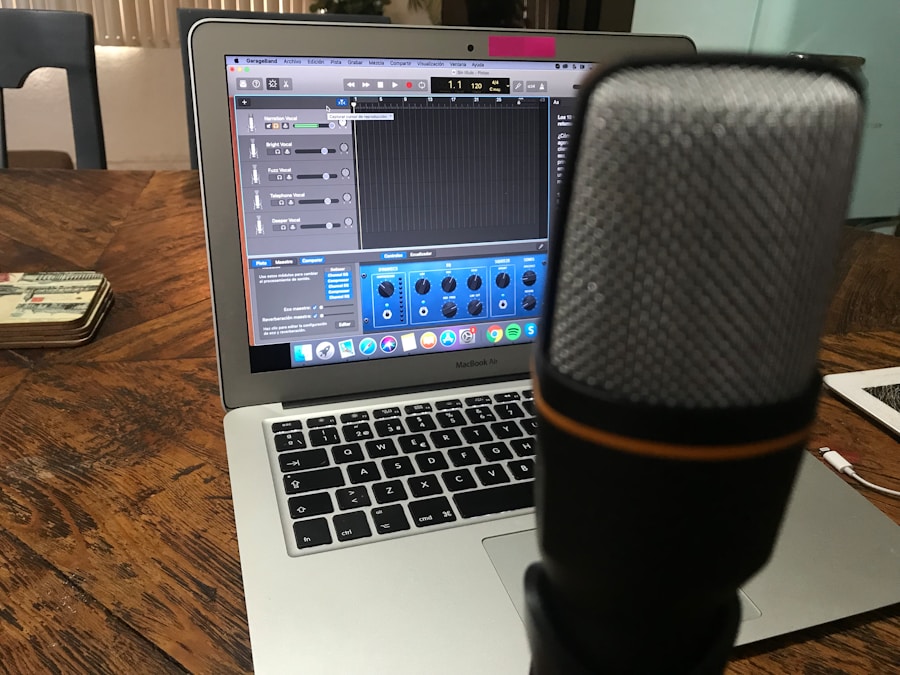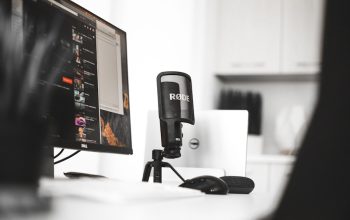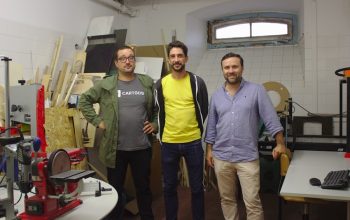The podcasting landscape has evolved dramatically over the past decade, transforming from a niche medium into a mainstream form of entertainment and information dissemination.
This growth can be attributed to several factors, including the rise of mobile technology, the increasing popularity of on-demand content, and the accessibility of podcasting tools.
With platforms like Spotify, Apple Podcasts, and Google Podcasts leading the charge, listeners now have unprecedented access to a vast array of topics, from true crime to personal finance, health, and wellness. Moreover, the podcasting industry has seen significant investment and innovation, with major media companies and independent creators alike entering the space. This influx of resources has led to higher production values and more polished content, raising the bar for what listeners expect.
Additionally, the advent of monetization strategies such as sponsorships, listener donations, and subscription models has made podcasting an attractive avenue for creators looking to turn their passion into a viable business. As a result, understanding the current podcasting landscape is crucial for anyone looking to launch their own show, as it provides insights into audience preferences, competitive dynamics, and potential revenue streams.
Key Takeaways
- Podcasting is a rapidly growing medium with a diverse landscape of content and formats.
- Identifying your target audience is crucial for creating content that resonates with listeners.
- Compelling content ideas should be relevant, valuable, and engaging for your target audience.
- Choosing the right format and structure for your podcast can enhance the listener experience.
- Mastering the art of storytelling is essential for creating a captivating and memorable podcast.
Identifying Your Target Audience
Identifying your target audience is a foundational step in creating a successful podcast. Knowing who you are speaking to allows you to tailor your content to meet their interests and needs effectively. Start by conducting thorough market research to understand the demographics of potential listeners.
Consider factors such as age, gender, location, and interests. For instance, if your podcast focuses on personal finance tips for millennials, your target audience will likely be younger adults who are navigating student loans, budgeting, and investing for the first time. Once you have a clear picture of your audience, delve deeper into their preferences and pain points.
Engage with potential listeners through social media platforms or online forums related to your podcast’s theme. This engagement can provide invaluable insights into what topics resonate with them and what formats they prefer. For example, if you discover that your audience enjoys storytelling over dry statistics, you can adjust your content strategy accordingly.
Additionally, consider creating listener personas—fictional representations of your ideal audience members—to help guide your content creation process.
Crafting Compelling Content Ideas

Once you have identified your target audience, the next step is to craft compelling content ideas that will engage and retain listeners. Brainstorming sessions can be incredibly beneficial at this stage; gather a team or collaborate with fellow creators to generate a list of potential topics. Consider current trends within your niche as well as timeless themes that resonate with your audience.
For example, if your podcast focuses on health and wellness, you might explore topics like mental health awareness during stressful times or the benefits of plant-based diets. In addition to topical relevance, think about how you can present these ideas in unique ways. Incorporating different perspectives or expert interviews can add depth to your episodes.
For instance, if you are discussing fitness routines, consider featuring a personal trainer who can provide professional insights alongside testimonials from everyday individuals who have successfully transformed their lives through exercise. This multifaceted approach not only enriches the content but also fosters a sense of community among listeners who may relate to different aspects of the discussion.
Choosing the Right Format and Structure
| Format/Structure | Advantages | Disadvantages |
|---|---|---|
| Preserves document formatting, widely compatible | Not easily editable, may not display well on all devices | |
| Word Document | Editable, widely used and accepted | Formatting may change when opened on different devices |
| HTML | Dynamic, easily accessible on the web | May require internet connection to access |
| Plain Text | Simple, easily readable | Lacks formatting and styling |
The format and structure of your podcast play a crucial role in how effectively you communicate your message and engage your audience. There are several formats to choose from, including solo shows, co-hosted discussions, interviews, narrative storytelling, and panel discussions. Each format has its strengths and weaknesses; for instance, solo shows allow for deep dives into specific topics but may lack the dynamic energy that comes from multiple voices.
Conversely, interviews can provide diverse perspectives but require careful planning to ensure a smooth flow of conversation. When deciding on a structure for each episode, consider how long you want your podcast to be and how frequently you plan to release new content. Consistency is key in building an audience; whether you choose a weekly or bi-weekly schedule, stick to it as much as possible.
Additionally, think about how you will segment each episode. A well-structured podcast might include an introduction that sets the stage for the topic at hand, followed by main content segments that delve into various aspects of the subject matter, and conclude with a summary or call-to-action that encourages listener engagement.
Mastering the Art of Storytelling
Storytelling is an essential skill in podcasting that can significantly enhance listener engagement. Humans are naturally drawn to stories; they evoke emotions and create connections that facts alone cannot achieve. To master storytelling in your podcast, focus on crafting narratives that resonate with your audience’s experiences or aspirations.
This could involve sharing personal anecdotes or case studies that illustrate key points in a relatable manner. Incorporating elements such as conflict and resolution can also make your stories more compelling. For example, if you are discussing entrepreneurship challenges in your podcast, share a story about a startup that faced significant hurdles but ultimately found success through perseverance and innovation.
This not only provides valuable insights but also inspires listeners who may be facing similar challenges in their own lives. Additionally, consider using sound design elements—such as music or sound effects—to enhance the storytelling experience and create an immersive atmosphere for your audience.
Utilizing Engaging Interview Techniques

Interviews can be one of the most dynamic components of a podcast when executed effectively. To conduct engaging interviews, preparation is key; research your guest thoroughly to understand their background and expertise. Craft open-ended questions that encourage thoughtful responses rather than simple yes-or-no answers.
For instance, instead of asking a guest if they believe in work-life balance, ask them to share their personal strategies for achieving it amidst their busy schedule. Active listening is another critical component of successful interviews. Pay close attention to your guest’s responses and be prepared to ask follow-up questions that delve deeper into their insights or experiences.
This not only demonstrates genuine interest but also creates a more organic conversation flow that can lead to unexpected revelations or anecdotes. Additionally, consider incorporating listener questions into your interviews; this not only engages your audience but also provides valuable insights into what they want to learn from your guests.
Incorporating Interactive Elements
Incorporating interactive elements into your podcast can significantly enhance listener engagement and foster a sense of community among your audience. One effective way to do this is by encouraging listener participation through social media platforms or dedicated online forums. For example, you might invite listeners to submit questions or topic suggestions ahead of each episode, creating a sense of ownership over the content being produced.
Another interactive approach is to host live Q&A sessions or virtual events where listeners can engage directly with you and any guests you may have on the show. This not only allows for real-time interaction but also helps build a loyal listener base that feels connected to your podcast on a personal level. Additionally, consider incorporating polls or surveys related to episode topics; sharing results during subsequent episodes can create anticipation and encourage ongoing participation from your audience.
Promoting and Distributing Your Podcast
Effective promotion and distribution are vital components of any successful podcast strategy. Once you’ve created high-quality content, it’s essential to ensure it reaches your target audience through various channels. Start by leveraging social media platforms such as Instagram, Twitter, Facebook, and LinkedIn to share episode highlights and engage with potential listeners.
Creating visually appealing graphics or short video clips can help capture attention in crowded feeds. Additionally, consider collaborating with other podcasters or influencers within your niche for cross-promotion opportunities. Guest appearances on other shows can introduce you to new audiences while providing valuable content for both parties involved.
Furthermore, submitting your podcast to multiple directories—such as Apple Podcasts, Spotify, Stitcher, and Google Podcasts—ensures maximum visibility across different platforms where potential listeners may discover your show. Email marketing is another powerful tool for promoting your podcast; building an email list allows you to communicate directly with interested listeners about new episodes or special events. Offering exclusive content or behind-the-scenes insights can incentivize sign-ups while fostering a loyal community around your podcast brand.
By employing a multi-faceted approach to promotion and distribution, you can significantly increase your podcast’s reach and impact within the ever-expanding audio landscape.
If you are interested in exploring the world of podcasting in education, you may want to check out the Education Podcast Network. One related article you might find interesting is “Hello World” which discusses the basics of starting a podcast in the education field. You can read the full article here. This network offers a wealth of resources and information for educators looking to incorporate podcasting into their teaching practices.
FAQs
What is podcasting?
Podcasting is a digital medium that allows users to listen to audio or video content on-demand. It typically involves a series of episodes that can be downloaded or streamed from the internet.
How does podcasting work?
Podcasting works by creating audio or video content, uploading it to a hosting platform, and making it available for listeners to subscribe to. Listeners can then use podcasting apps or software to download or stream episodes to their devices.
What equipment do I need to start a podcast?
To start a podcast, you will need a microphone, headphones, recording software, and a hosting platform to upload your episodes. Additional equipment such as a pop filter, microphone stand, and audio interface may also be beneficial.
How can I listen to podcasts?
You can listen to podcasts using a variety of methods, including podcasting apps on your smartphone or tablet, streaming platforms on your computer, or dedicated podcasting devices. Many podcasts are also available for download from the internet.
What are the benefits of podcasting?
Podcasting allows for the creation and consumption of niche content, provides a platform for storytelling and education, and offers a convenient way for listeners to access audio and video content on-the-go.
Are podcasts free to listen to?
Many podcasts are free to listen to, as creators often rely on advertising, sponsorships, or listener donations for revenue. Some podcasts may offer premium content or ad-free episodes through paid subscriptions.



